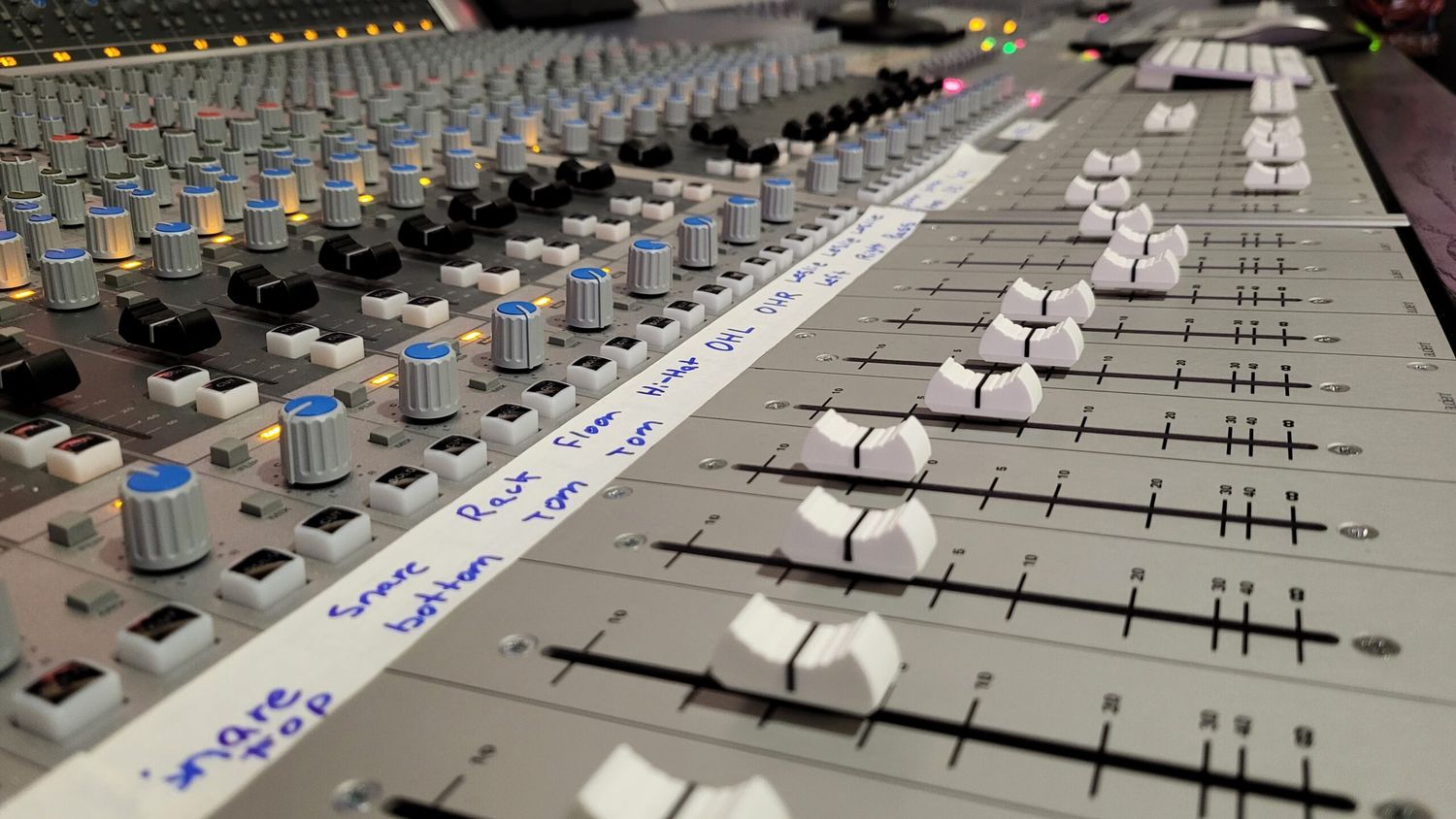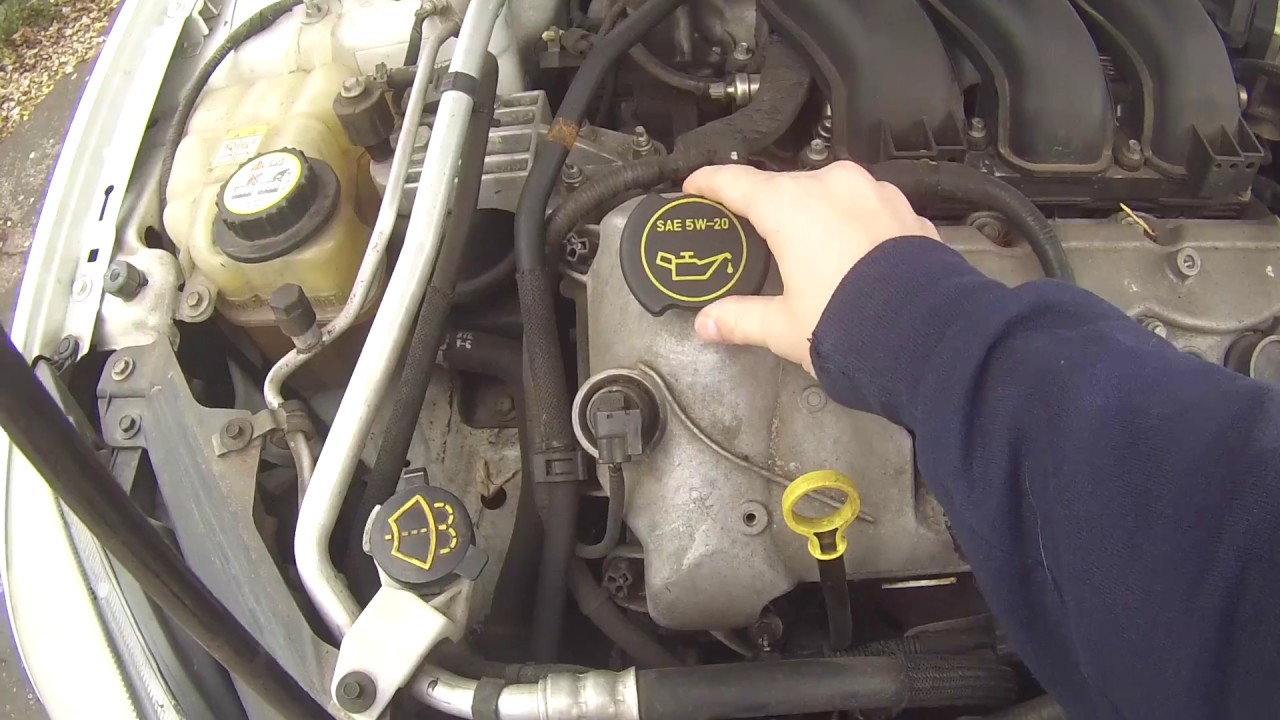Home>Production & Technology>Sound Engineer>How To Send Drum Stems To A Sound Engineer


Sound Engineer
How To Send Drum Stems To A Sound Engineer
Published: March 7, 2024
Learn how to properly send drum stems to a sound engineer for professional mixing and mastering. Follow these steps to ensure high-quality results.
(Many of the links in this article redirect to a specific reviewed product. Your purchase of these products through affiliate links helps to generate commission for AudioLover.com, at no extra cost. Learn more)
Table of Contents
Introduction
Sending drum stems to a sound engineer is a crucial step in the music production process. Whether you're a musician, producer, or recording engineer, ensuring that the drum stems are properly prepared and sent can significantly impact the quality of the final mix. Drum stems, which are individual tracks of the drums in a song, play a fundamental role in shaping the overall sound and groove of a track. By sending these stems to a sound engineer, you are entrusting them with the essential task of blending, processing, and enhancing the drum tracks to achieve a polished and professional sound.
In this comprehensive guide, we will delve into the intricacies of sending drum stems to a sound engineer. From understanding the concept of drum stems to preparing and choosing the right file format for sending, we will cover every aspect to ensure that your drum tracks reach the sound engineer in optimal condition. Additionally, we will explore the best practices for sending drum stems, providing you with valuable insights that can streamline the collaboration process between musicians and sound engineers.
As we embark on this journey, it's important to recognize the significance of drum stems in the context of music production. The drums serve as the rhythmic backbone of a song, driving the energy and setting the pace for other instruments to follow. By isolating and sending individual drum stems, you empower the sound engineer to exert precise control over the drum mix, enabling them to apply tailored processing and effects to each element, such as kick, snare, toms, and cymbals. This level of granularity not only enhances the sonic clarity and impact of the drums but also allows for creative manipulation and customization, ultimately contributing to the overall sonic excellence of the final mix.
With this understanding, let's embark on a journey to demystify the process of sending drum stems to a sound engineer, equipping you with the knowledge and confidence to optimize the collaboration and achieve outstanding results in your music production endeavors.
Understanding Drum Stems
Drum stems are individual audio tracks that isolate specific components of the drum kit, such as the kick drum, snare drum, toms, and cymbals. These stems capture the sonic characteristics and nuances of each drum element, allowing for independent control and manipulation during the mixing and mastering stages of music production. By breaking down the drum kit into separate stems, sound engineers gain the flexibility to apply tailored processing, equalization, and effects to each component, thereby sculpting a cohesive and impactful drum mix.
When creating drum stems, it's essential to ensure that each track accurately represents the intended sound of the corresponding drum element. For instance, the kick drum stem should solely capture the low-frequency thump and resonance of the kick drum, while the snare drum stem should focus on the sharp attack and body of the snare. By maintaining this level of precision in the stem creation process, sound engineers can work with a comprehensive set of individual drum tracks, enabling them to refine the tonal balance, dynamics, and spatial positioning of the drums within the mix.
Understanding the role of drum stems in the context of music production is pivotal for achieving professional and polished results. These stems serve as the building blocks for constructing a cohesive and impactful drum mix, allowing the sound engineer to exercise precise control over the sonic characteristics of each drum component. Furthermore, the utilization of drum stems facilitates seamless collaboration between musicians and sound engineers, as it empowers both parties to communicate and execute specific sonic visions with clarity and efficiency.
In essence, comprehending the significance of drum stems entails recognizing their transformative potential in shaping the overall sonic landscape of a song. By harnessing the power of individual drum tracks, sound engineers can elevate the rhythmic foundation of a track, infusing it with clarity, punch, and character. This level of sonic refinement not only enhances the listening experience for the audience but also reflects the dedication to craftsmanship and excellence in music production.
As we delve deeper into the intricacies of preparing and sending drum stems to a sound engineer, it's imperative to maintain a keen awareness of the pivotal role that drum stems play in the pursuit of sonic excellence. With this understanding, we can navigate the subsequent stages of the process with clarity and purpose, ensuring that the drum stems are meticulously prepared and sent to facilitate a seamless and productive collaboration with the sound engineer.
Preparing Drum Stems for Sending
Preparing drum stems for sending is a critical step that significantly influences the quality and efficiency of the collaboration between musicians and sound engineers. To ensure that the drum stems are primed for seamless integration into the sound engineer's workflow, meticulous attention to detail and adherence to best practices are essential. Here's a comprehensive guide to preparing drum stems for sending:
-
Consolidate and Organize: Begin by consolidating and organizing the individual drum tracks that constitute the drum stems. This involves ensuring that each stem starts at the same point in the timeline, allowing for perfect synchronization when integrated into the sound engineer's session. Additionally, labeling the stems with clear and descriptive names, such as "Kick," "Snare," "Hi-Hat," etc., enhances clarity and streamlines the identification process during mixing.
-
Trimming and Editing: Prior to sending the drum stems, it's imperative to trim and edit the audio files to remove any unwanted silence or extraneous sounds at the beginning and end of each stem. This optimization not only reduces file size but also ensures that the sound engineer receives clean and precisely defined drum tracks, ready for seamless integration into the mix.
-
Level Matching: Achieving uniform levels across the drum stems is crucial for maintaining a balanced and cohesive mix. By carefully adjusting the levels of each stem to achieve relative consistency, you empower the sound engineer to focus on creative processing and enhancement, rather than compensating for disparate volume levels.
-
Processing and Effects: While it's essential to maintain the integrity of the original drum sound, subtle processing and effects, such as gentle compression or EQ adjustments, can enhance the cohesiveness and impact of the drum stems. However, it's important to exercise restraint and avoid excessive processing that may limit the sound engineer's creative freedom during the mixing process.
-
File Format and Resolution: Selecting the appropriate file format and resolution is pivotal for preserving the fidelity and integrity of the drum stems. Lossless formats such as WAV or AIFF are preferred, as they retain the highest quality and provide the sound engineer with a pristine canvas for manipulation and enhancement.
By meticulously preparing the drum stems in accordance with these best practices, you lay the foundation for a productive and harmonious collaboration with the sound engineer. This level of attention to detail not only reflects a commitment to sonic excellence but also fosters a seamless and efficient workflow, ultimately contributing to the realization of a polished and professional drum mix.
Choosing the Right File Format
Selecting the appropriate file format for sending drum stems to a sound engineer is a pivotal decision that directly impacts the fidelity, versatility, and compatibility of the audio files. The chosen format not only influences the sonic integrity of the drum stems but also determines the ease of integration into the sound engineer's digital audio workstation (DAW) and the potential for further processing and manipulation. When deliberating on the right file format, several factors come into play, each bearing significance in preserving the sonic characteristics and facilitating a seamless collaborative workflow.
Lossless vs. Lossy Compression
The distinction between lossless and lossy compression serves as a fundamental consideration when choosing the file format for drum stems. Lossless formats, such as WAV (Waveform Audio File Format) and AIFF (Audio Interchange File Format), preserve the entirety of the original audio data without sacrificing quality. This retention of fidelity ensures that the drum stems reach the sound engineer in their purest form, free from the artifacts and degradation associated with compression. Conversely, lossy formats, like MP3, employ perceptual coding to achieve smaller file sizes but at the cost of discarding certain audio information. Given the critical nature of drum stems in shaping the overall mix, opting for lossless formats is paramount in safeguarding the sonic integrity and enabling the sound engineer to work with uncompromised audio material.
Bit Depth and Sample Rate
In addition to the choice between lossless and lossy compression, the specification of bit depth and sample rate further influences the file format selection. Bit depth determines the dynamic range and resolution of the audio, with higher bit depths offering greater precision in capturing subtle nuances and minimizing quantization errors. Common bit depths include 16-bit and 24-bit, with the latter being favored for its ability to accommodate a wider dynamic range and finer detail. Similarly, the sample rate, measured in kilohertz (kHz), dictates the frequency at which audio samples are captured per second. Standard sample rates range from 44.1 kHz to 96 kHz, with higher rates capturing more high-frequency content and facilitating potential time-stretching and pitch-shifting capabilities. By aligning the bit depth and sample rate with the original recording specifications, the chosen file format retains the full sonic spectrum of the drum stems, empowering the sound engineer to leverage the highest quality audio for mixing and processing.
Interoperability and Compatibility
Beyond the technical attributes of the file format, considerations of interoperability and compatibility play a crucial role in ensuring a seamless exchange of drum stems between musicians and sound engineers. Opting for widely supported file formats, such as WAV and AIFF, enhances cross-platform compatibility and minimizes the likelihood of compatibility issues when integrating the stems into the sound engineer's DAW. This strategic choice mitigates potential barriers to collaboration, allowing for a fluid and efficient workflow that centers on creative expression and sonic refinement.
In essence, the selection of the right file format for sending drum stems to a sound engineer is a multifaceted decision that harmonizes technical fidelity, practical compatibility, and collaborative efficiency. By prioritizing lossless compression, aligning with optimal bit depth and sample rate specifications, and embracing interoperable formats, musicians empower sound engineers to harness the full potential of the drum stems, ultimately contributing to the realization of a compelling and sonically captivating mix.
Sending Drum Stems to the Sound Engineer
Once the drum stems are meticulously prepared, the next pivotal step is to initiate the process of sending them to the sound engineer. This phase marks the transition of creative ownership from the musician or producer to the sound engineer, who undertakes the responsibility of refining and sculpting the drum mix to align with the sonic vision of the project. When sending drum stems to the sound engineer, several considerations and best practices come into play, each contributing to a seamless and productive exchange of audio material. Here's a comprehensive guide to navigating the process of sending drum stems to the sound engineer:
-
Clear Communication: Prior to sending the drum stems, establishing clear and concise communication with the sound engineer is paramount. This entails conveying specific preferences, sonic references, and any pertinent details that can provide insight into the intended sonic direction. By fostering open dialogue and aligning expectations, both parties can embark on the collaborative journey with a shared understanding of the creative objectives and technical requirements.
-
File Transfer Method: Selecting a reliable and secure file transfer method is essential for ensuring the safe and expedient delivery of the drum stems to the sound engineer. Utilizing reputable file-sharing platforms, cloud storage services, or dedicated FTP (File Transfer Protocol) servers facilitates the seamless transmission of large audio files, minimizing the risk of data loss or corruption during transit.
-
Accompanying Documentation: In addition to the drum stems, providing accompanying documentation, such as a track sheet detailing the contents of each stem, session tempo information, and any specific processing notes, enriches the context surrounding the audio material. This supplementary documentation empowers the sound engineer with valuable insights and technical details, streamlining the integration of the drum stems into their mixing environment.
-
Quality Assurance: Prior to finalizing the transfer, conducting a thorough quality assurance check ensures that the drum stems are intact, accurately labeled, and free from any technical anomalies. Verifying the integrity of the audio files instills confidence in the reliability of the delivered content, fortifying the foundation for the sound engineer to commence their creative endeavors with assurance and clarity.
-
Follow-Up and Collaboration: Following the transmission of the drum stems, maintaining open channels of communication and fostering a spirit of collaboration cultivates a dynamic and synergistic partnership between musicians and sound engineers. Embracing feedback, addressing queries, and remaining receptive to collaborative input fosters a harmonious and productive working relationship, ultimately enriching the creative journey and elevating the sonic outcome.
By adhering to these best practices and embracing a spirit of collaboration and professionalism, the process of sending drum stems to the sound engineer unfolds as a seamless and purposeful exchange. This collaborative synergy not only amplifies the potential for sonic excellence but also underscores the shared commitment to realizing a compelling and evocative drum mix that resonates with artistic integrity and technical prowess.
Conclusion
In conclusion, the process of sending drum stems to a sound engineer is a pivotal juncture in the music production journey, embodying the convergence of technical precision, creative collaboration, and unwavering dedication to sonic excellence. As we traverse the intricacies of understanding, preparing, and sending drum stems, it becomes evident that this undertaking transcends mere file exchange; it encapsulates a profound commitment to craftsmanship, artistry, and the relentless pursuit of sonic perfection.
The journey commences with a profound understanding of drum stems, recognizing them as the elemental building blocks that underpin the rhythmic tapestry of a song. By isolating and sending individual drum tracks, musicians and sound engineers embark on a transformative odyssey, wielding the power to sculpt and refine the rhythmic foundation with precision and finesse. This understanding lays the groundwork for meticulous preparation, where the consolidation, trimming, level matching, and judicious processing of drum stems coalesce to form a pristine canvas for the sound engineer's creative endeavors.
The pivotal decision of choosing the right file format emerges as a cornerstone in preserving the fidelity, interoperability, and creative potential of the drum stems. By embracing lossless compression, aligning with optimal bit depth and sample rate specifications, and prioritizing compatibility, musicians empower sound engineers to harness the full sonic spectrum, unfettered by technical constraints. This strategic choice not only safeguards the integrity of the audio material but also fosters a seamless and efficient collaborative workflow, where creativity reigns supreme.
As the drum stems embark on their journey to the sound engineer, the principles of clear communication, reliable file transfer, comprehensive documentation, and unwavering commitment to quality assurance converge to facilitate a harmonious and purposeful exchange. This exchange transcends the mere transference of audio files; it embodies a shared vision, a collective pursuit of sonic innovation, and a testament to the unyielding dedication to the art of music production.
In essence, the process of sending drum stems to a sound engineer transcends the realm of technical logistics; it embodies a symphony of creativity, collaboration, and unwavering commitment to excellence. It symbolizes the fusion of art and science, where the rhythmic heartbeat of a song is entrusted to the skilled hands and discerning ears of the sound engineer, igniting a transformative alchemy that culminates in a compelling and sonically captivating drum mix.











